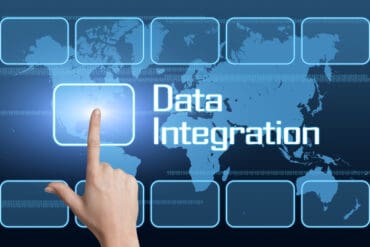
As data access to different types of data has become much easier, transforming that data to create a cohesive view is the logical next step for businesses to accomplish.
Data competitiveness is key for every business, but given the enormous amounts of data being generated by modern enterprises, many organizations are falling behind in fully using it to make more informed business and technical decisions. A bottleneck still exists between data and business users, and we believe automating data transformations is the key to solving this problem.
Data transformation is the processing of data that originates from, or even resides in, multiple data sources. It involves data modeling, cleansing, governance, and documentation: processes that ultimately enable enterprises to extract insights from their data.
Companies have been struggling with data transformation and optimization since the early days of data warehousing, and with the enormous growth of the cloud, that challenge has increased exponentially. Data teams, in particular, are challenged with the everyday demands of the business, as well as the shortage of skilled data engineers and data analysts to combat the growing volumes and complexity of data.
Now more than ever, data transformations are quickly becoming a competitive differentiator for organizations that want to take full advantage of the enormous amounts of data generated by modern enterprises.
Below, we outline the top trends and our technology predictions that will impact and support the data transformation market this year.
See also: Data Engineers Spend Two Days Per Week Fixing Bad Data
Prediction 1: The Return of Data Modeling
Over the past ten years, data modeling—a fundamental process of setting up data structures aligned to business requirements—took a backseat as companies rushed to bring products to market, often well before they had the data infrastructure they needed to be successful. During that same time, data volumes, data types, and the velocity of data exploded: businesses were producing more data, including real-time streaming data, and needed ways to process it all. But many organizations attempted to apply “the everything as code” approach to their analytics practices. All those trends converged over time to manifest, now more than ever, into technical debt and data challenges that are deeply felt by data engineering teams in particular.
In 2023, those industry veterans who have spent nearly a decade calling for thoughtfulness in building fundamental data infrastructure instead of rushing to build buzzworthy products will get their “I told you so” moment. Data modeling is making a comeback, alongside the realization that without the infrastructure to deliver high-quality data, businesses will not get very far toward the promise of predictive analytics, machine learning/AI, or even making truly data-driven decisions.
See also: Data Management in the Era of Data Intensity
Prediction 2: The Rise and Fall of Everything-as-Code
In recent years, code-first technologies gained popularity as the “everything as code” trend allowed software engineering best practices to be applied to analytics. However, that approach also created challenges for organizations that became especially pronounced in 2021. For example, an organization that has invested in code-first tools must also commit to expanding its engineering team accordingly, hiring enough qualified, experienced engineers to meet the needs of the business for scale. The market for skilled data engineers continues to be competitive even in the current economic downturn, while many organizations are looking at layoffs and hiring freezes to cut operational costs in other departments.
In 2023, as budgets likely continue to tighten, a trend will emerge toward seeking optimization and productivity. Rather than continuing to grow teams, companies that are forced to do more with less will look for ways to automate data processes that they once did manually. That is good news for platforms and tools that enable automation, are simple to use, and free up time spent on repetitive tasks so teams can focus instead of creating impact for the business.
See also: Six Critical Costs of External Data Integration
Prediction 3: The Rise of Data-as-a-Product
As the trend and demand for the democratization of data continue to rise, businesses are becoming increasingly responsible for understanding and using their sourced data to make informed business and technical decisions. We anticipate that the rise of data-as-a-product (DaaP) tools will infiltrate the market to allow enterprises to easily access and apply data sets to overcome different business challenges. The rise of DaaP tools will increase the quality, trust, documentation, and usage of data across enterprises.
This year, DaaP will reach maturity, resulting in increased quality and trust in data at companies. This will lead to more robust data organizations within enterprises that require an increased need for data modeling technologies and data teams/engineers.
Bottom line: It’s important to look at how organizations consume data to understand why data transformations are so essential. Initially, organizations that were adopting cloud platforms like Snowflake hit a major hurdle: getting access to data from their source systems. As companies like Fivetran have largely solved that problem and gaining access to different types of data has become much easier, transforming that data to create a cohesive view is the logical next step for businesses to accomplish. This becomes dramatically more difficult as you begin to integrate data from traditional on-premises platforms and various web sources.
Taken together, these technologies will help turn 2023 into a pivotal year for data transformation solutions. As a result, data management and data analytics will become more than an efficiency enabler for enterprise data operations and provide the necessary insights to deliver strong business outcomes.



























